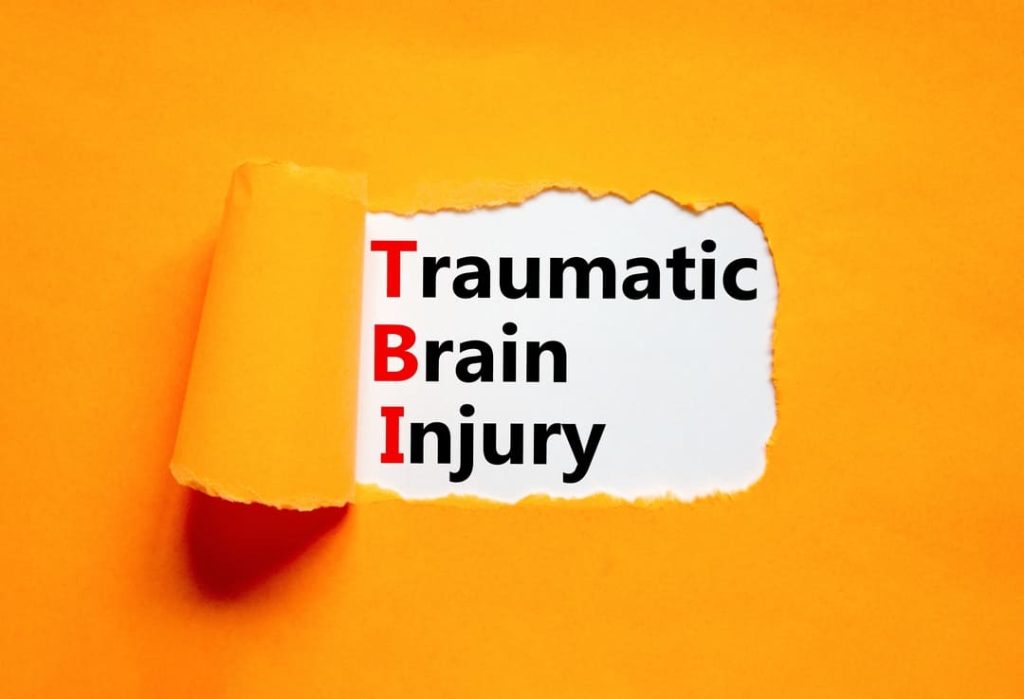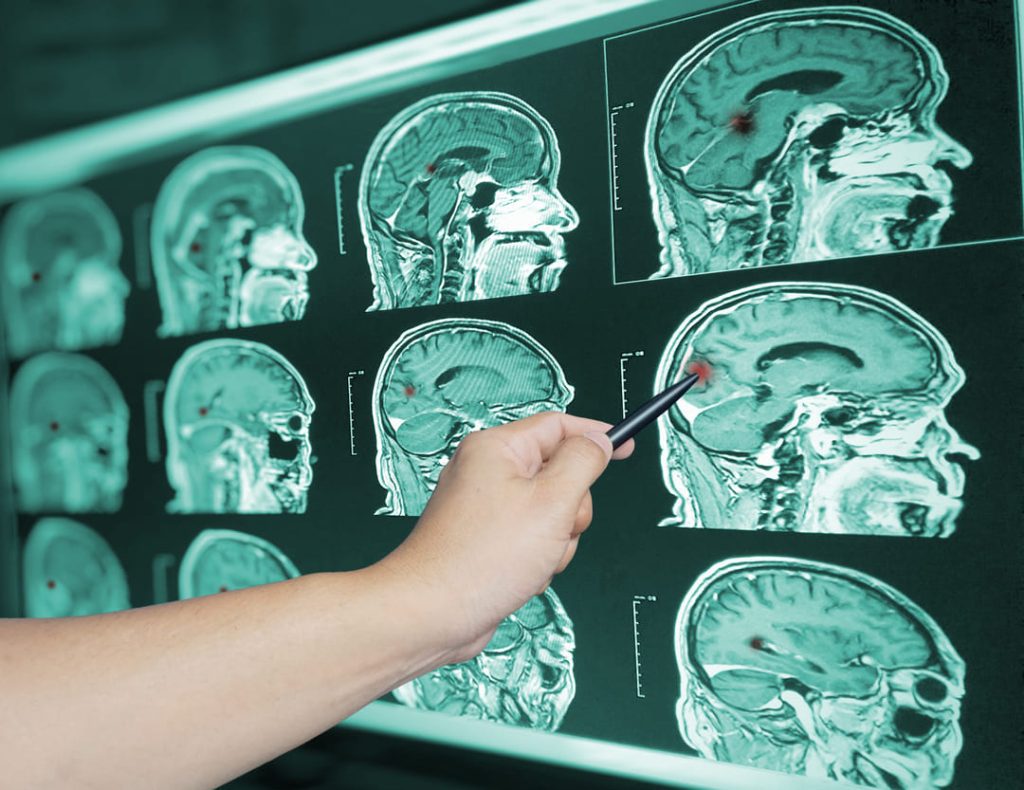Looking for Expert-Level VA Claim Answers?📱Call Us Now! 737-295-2226
In many ways, a brain or mental health injury is the worst kind of injury. After all, what can be more disabling than impairing your brain or mental health?
Yet, due to the nature of the Armed Forces, TBIs and PTSD are common in the military.
In this post, we’ll discuss the overlaps between a TBI and PTSD and explain how the VA rates these conditions.
We’ll also cover the causes and symptoms of a TBI and PTSD, whether or not they have a cause-and-effect relationship, and how you can qualify for VA disability benefits.
Table of Contents

You DESERVE a HIGHER VA rating.
Take advantage of a VA Claim Discovery Call with an experienced Team Member. Learn what you’ve been missing so you can FINALLY get the disability rating and compensation you’ve earned for your service.
Are TBIs and PTSD related?
Yes, TBIs and PTSD are related.
As more and more research is conducted, it’s becoming clear that TBIs and PTSD are linked.
According to the VA, you’re more likely to develop PTSD if you’ve had a TBI than if you haven’t.
However, the evidence suggests that their common causes can explain the link between a TBI and PTSD.
That means the events that can cause a TBI can also cause PTSD.
For example, explosions and car wrecks are inherently traumatic and can simultaneously cause TBIs and PTSD. So far, research hasn’t been able to prove a causal relationship between TBIs and PTSD.
Interestingly enough, the consensus for a while was that PTSD cannot develop after a TBI that causes memory loss. The thinking was that you can’t be traumatized by an event you can’t remember. But research has since shown this to be false.
It turns out that your brain can still be traumatized by events it can’t recall. This is because aspects of the event can become “encoded” in your unconscious mind.
When a traumatic event becomes encoded in your unconscious mind, some characteristics of the event that your unconscious brain remembers can then be triggered by associated cues.
PTSD and TBI Overlapping Symptoms
PTSD and TBIs can sometimes share the following symptoms:
- Interrupted sleep
- Irritability
- Restlessness
- Trouble focusing
- Memory disturbances
- Impulse control issues
- Anxiety
- Depression

What is a Traumatic Brain Injury (TBI)?
A Traumatic Brain Injury (TBI) is a brain injury that happens when there’s a sudden blow to the head—and can lead to difficulties in thinking, moving, and emotions. It has some of the same symptoms and causes as a concussion.
The impact, blow, or jolt to the head can cause the brain to move inside the skull.
Traumatic brain injuries (TBIs) and post-traumatic stress disorder (PTSD) have a heavy impact on many veterans—and can negatively affect their social, professional, and personal lives.
TBI Causes
Your time in the military could have exposed you to several scenarios that can cause a TBI:
- IED blast
- The concussion of a hand grenade
- Whiplash from a ride in the back of an LMTV
- Maybe you hit your head a little too hard on the combative mat
All of these scenarios can rattle your cage enough to cause a TBI.
TBI Symptoms
According to the VA, symptoms of a TBI can include:
- Physical:
- Dizziness
- Fatigue
- Trouble falling and staying asleep
- Vision problems
- Feeling bothered by noise and light
- Cognitive:
- Memory problems
- Trouble focusing
- Poor judgment and impulsive behavior
- Feeling slowed down
- Trouble putting thoughts into words
- Emotional:
- Depression
- Quick to anger and outlashes
- Feelings of fear, worry, or anxiety
- Personality changes

What is Post-Traumatic Stress Disorder (PTSD)?
Post-Traumatic Stress Disorder (PTSD) is a mental health condition caused by a traumatic or terrifying event. It’s incredibly common among U.S. veterans.
More than 57% of mental disorder claims awarded by the VA are for PTSD, and it affects upwards of 29% of GWOT veterans.
It is nothing short of an epidemic.
PTSD Causes
PTSD is caused by experiencing a traumatic or terrifying event. A simple litmus test is “Did you fear for your life?” If the answer to that question is yes, then the event was traumatic enough to cause PTSD.
Your time in the military could have exposed you to situations traumatic enough to cause PTSD, such as:
- Close quarters combat
- Roadside IED
- Indirect fire
- Sexual assault
- Life-threatening illness
PTSD Symptoms
The symptoms of PTSD often closely relate to the event(s) that caused your PTSD. If you suffer from PTSD, you might:
- Relive the event in the form of a flashback or nightmare.
- Avoid things that remind you of the event. This can sometimes result in antisocial, unusual, or self-destructive behaviors. It might cause you to:
- avoid crowds
- avoid driving
- keep yourself overly busy to avoid thinking about the event.
- Suicide ideation. This is a worst-case scenario.

Can I Get a VA Rating for Both a TBI and PTSD?
Yes. In some cases, you can get a VA Rating for both a TBI and PTSD.
This all depends on your symptoms. The VA does not award separate ratings for conditions that produce overlapping symptoms. In other words, two disabilities causing the same symptoms will receive just one rating.
For example, if your TBI and PTSD both produce fatigue, depression, and anxiety, you’ll only get one rating for both your TBI and PTSD.
However, if your TBI and PTSD produce different symptoms, then they could be rated separately.
How the VA Rates TBI and PTSD
If you think you’ve had a TBI or have PTSD, you should consider filing a VA claim so you can get the benefits you deserve.
Even if you’ve been out of the military for years, it’s never too late to file for VA benefits. There is no deadline to claim your benefits.
TBIs and PTSD are both ratable up to 100%. Monthly compensation for a 100% VA rating starts at $3,621.95. That’s a lot of extra cushion added to your bottom line every month.
TBI Ratings
The VA rates TBIs at 0%, 10%, 40%, 70%, or 100%. Your percentage depends on the severity of your symptoms.
The VA places TBI symptoms into 10 groups called “facets.”:
- Memory, attention, concentration, executive function
- Judgment
- Social interaction
- Orientation
- Motor activity (with intact motor and sensory system)
- Visual-spatial orientation
- Subjective symptoms
- Neurobehavioral effects
- Communication
- Consciousness
The symptoms in each facet are divided into 5 impairment levels based on their severity. Each level corresponds to a VA percentage:
- 0=0%
- 1=10%
- 2=40%
- 3=70%
- total =100%.
According to the Code of Federal Regulations Title 38, your TBI VA rating is based on the highest level of impairment your symptoms meet.
For example, if any symptom is evaluated as a level 3, then you automatically get a 70% TBI VA rating, no matter the severity of any other symptom(s). You’ll get a 100% TBI VA rating if any symptom is evaluated as Total.
Below is the TBI impairment scale for memory, attention, concentration, and executive functions:
PTSD Ratings
PTSD is rated at 0%, 10%, 30%, 50%, 70%, or 100%.
It’s rated using the general rating scale that applies to all mental disorders.
The percentage you’re awarded depends mostly on your level of “occupational and social impairment.”
0% = You’ve received a diagnosis, but your symptoms “are not severe enough either to interfere with occupational and social functioning.”
10% = Occupational and social impairment due to mild or transient symptoms which decrease work efficiency and ability to perform occupational tasks only during periods of significant stress or symptoms controlled by continuous medication.
30% = Occupational and social impairment with occasional decrease in work efficiency and intermittent periods of inability to perform occupational tasks (although generally functioning satisfactorily, with routine behavior, self-care, and conversation normal) due to such symptoms as:
- depressed mood
- Anxiety
- Suspiciousness
- panic attacks (weekly or less often)
- chronic sleep impairment
- mild memory loss (such as forgetting names, directions, recent events).
50% = Occupational and social impairment with reduced reliability and productivity due to such symptoms as:
- flattened affect
- circumstantial, circumlocutory, or stereotyped speech
- panic attacks more than once a week
- difficulty in understanding complex commands
- impairment of short- and long-term memory (e.g., retention of only highly learned material, forgetting to complete tasks)
- impaired judgment
- impaired abstract thinking
- disturbances of motivation and mood
- difficulty in establishing and maintaining effective work and social relationships.
70% = Occupational and social impairment, with deficiencies in most areas, such as work, school, family relations, judgment, thinking, or mood, due to such symptoms as:
- suicidal ideation
- obsessional rituals which interfere with routine activities
- speech intermittently illogical, obscure, or irrelevant
- near-continuous panic or depression affecting the ability to function independently, appropriately and effectively
- impaired impulse control (such as unprovoked irritability with periods of violence)
- spatial disorientation
- neglect of personal appearance and hygiene
- difficulty in adapting to stressful circumstances (including work or a worklike setting)
- inability to establish and maintain effective relationships.
100% = Total occupational and social impairment due to symptoms such as:
- gross impairment in thought processes or communication
- persistent delusions or hallucinations
- grossly inappropriate behavior
- persistent danger of hurting self or others
- intermittent inability to perform activities of daily living (including maintenance of minimal personal hygiene)
- disorientation to time or place
- memory loss for names of close relatives, own occupation, or own name.

PTSD and TBI Headaches
One other notable symptom of both TBI and PTSD is headaches or migraines.
According to the National Institute of Health (NIH), headaches are the most common symptom of a mild TBI.
Anywhere between 47%-95% of people suffer from headaches after a TBI. TBI headaches are so common and so persistent after suffering a TBI that the NIH classifies them as a chronic symptom.
Headaches are also common symptoms of PTSD. One study found that more than 50% of veterans with PTSD also have migraines.
Boost Your VA Rating
The VA evaluates migraines and headaches under diagnostic code 8100. They’re rated at 0%, 10%, 30%, or 50% increments.
While no one likes chronic headaches or migraines, they could mean a boost to your TBI or PTSD VA disability rating.
The VA evaluates migraines and headaches under diagnostic code 8100. They’re rated at 0%, 10%, 30%, or 50% increments.
The criteria for each percentage is based on how often and for how long your migraines make you “prostrated.” In other words, how often are your migraines so bad that you have to lie down?
To be rated at 50%, your migraines have to be classified as “with very frequent completely prostrating and prolonged attacks productive of severe economic inadaptability.”
Headaches can be rated secondary to both a TBI and PTSD.
If you have a TBI VA rating or a PTSD VA rating and have developed headaches, you should consider filing for them as a secondary condition.
You can read more about secondary conditions in our post What are VA Secondary Conditions? (2024 Quick Guide).
TBI and PTSD ICD-11 Codes
Both TBIs and PTSD are categorized in the International Statistical Classification of Diseases and Related Health Problems (ICD). This is a code system used worldwide to document and categorize medical conditions. The ICD is now using version 11 and has over 17,000 unique codes, and can be used to code more than 1.6 million clinical scenarios.
The ICD is an important tool for identifying and tracking global health trends. 35 countries currently use it, and it serves as a standardized language for health professionals around the world.
The TBI ICD-11 code is NA07.Z. More specifically, NA07.Z is the code used for an “unspecified intracranial injury,” which TBI falls under. From there, intracranial injuries are classified according to what “residuals” or symptoms present in the patient. The PTSD ICD-11 code is 6B40.
Wrapping Up
If you’re suffering from a TBI or PTSD, we want to make sure you’re getting the benefits you’ve earned. The stigma against mental health disorders is slowly dying, and it’s time to claim the VA benefits you deserve.
Filing a claim with the VA is not always an easy task. The slow-moving VA bureaucracy can drain you of all motivation if you let it. But we’ve got your six!
Reach out today and schedule your FREE VA Claims Insider Discovery Call!
Veterans: Are You Ready to WIN, SERVICE-CONNECT, and INCREASE Your VA Rating FASTER?
- VA Claims Insider is the #1 most trusted name in VA disability claims.
- Work directly with a VA claims coach who can help lead you to VA claim victory.
- 25,000+ disabled veterans served in our membership programs since 2016.
- 30% average rating increase for veterans who complete our #1 rated Elite program.
- 4.7/5.0 average rating out of 5,500+ total reviews; over 4,500 5-star reviews.
You DESERVE a HIGHER VA rating.
Take advantage of a VA Claim Discovery Call with an experienced Team Member. Learn what you’ve been missing so you can FINALLY get the VA disability rating and compensation you’ve earned for your service.



